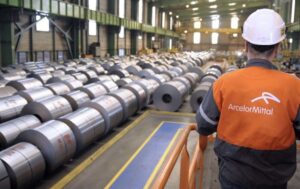
Steelmaker ArcelorMittal reduced its net loss and increased its revenue in the fourth quarter, while its EBITDA exceeded analysts’ forecasts.
According to the company’s press release, in October-December 2024, its net loss amounted to $390 million, or $0.51 per share, compared to a loss of $2.97 billion, or $3.57 per share, in the comparable period of the previous year. Excluding one-time items, earnings were $0.52 per share versus $1.18 a year earlier.
The earnings adjustment includes a one-time tax expense related to the change in the tax rate in Luxembourg ($0.4 billion) and a provision for tax litigation ($0.2 billion).
The company’s EBITDA in the fourth quarter increased by 13% to $1.65 billion from $1.45 billion a year earlier, while the consensus analysts’ forecast, presented earlier by the company itself, envisaged an increase to $1.53 billion.
ArcelorMittal’s revenue in the reporting quarter increased to $14.7 billion from $14.6 billion in the fourth quarter of 2023.
Steel production in the fourth quarter increased to 14 million tonnes from 13.7 million tonnes a year earlier, while steel supplies rose to 13.5 million tonnes against 13.3 million tonnes.
The company expects global steel consumption (excluding China) to grow by 2.5%-3.5% in 2025 compared to 2024.
Shares of ArcelorMittal are up 3.5% in trading on Thursday.
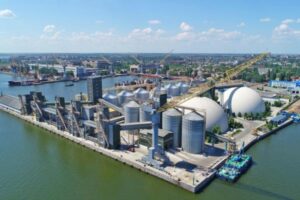
“Nibulon is now one of the three largest grain exporters in Ukraine and has been profitable for two and a half years, with EBITDA of approximately $68 million in 2024, Andriy Vadatursky, owner of one of the largest grain market operators in Ukraine, JV Nibulon LLC, told NV in an interview.
He noted that this figure is slightly lower than the agricultural holding planned due to difficulties in the second half of the year, and added that in a few days he will have the exact figure of financial performance for 2024.
Commenting on the information about the increase in the share of Nibulon’s own fleet in 2024 from 26% to 55%, and the volume of transportation from 278 thousand tons to 404 thousand tons, Vadatursky reminded that the company was built on investments in alternative ways of delivering products, in particular, in water transport. Accordingly, elevators were built on the Dnipro River and the Southern Bug River.
“Now all this is standing still. Kherson is under fire, Mykolaiv is closed. The fleet has nowhere to work. More than 100 ships are blocked. Some elevators, even in the occupied territory, are left without water. The
Kakhovka dam was broken in May 2023. The prospect of returning was taken away from us. I can’t imagine that the river (transportation by the Dnipro) will work for 5-10 years, even after the victory,” he said.
To solve this problem, Nibulon leased vehicles from Scania (Sweden), increased the number of vehicles and, of course, optimized its operations to use its own vehicles as much as possible.
“We have 138 new vehicles in total. We have purchased about 70 vehicles, I think, for EUR 17 million. Denmark also helped us. They take care of Mykolaiv region. For example, we got a loan from EIFO. Denmark gave us a 14-year loan for agriculture. (…) We received about EUR12.5 million. We purchased German machinery,” said the owner of the agricultural holding.
Mr. Vadatursky added that foreign investors are extremely cautious about investing in Ukraine, while bureaucratic Europe is very slow to change course and spends a lot of time on simple things.
JV Nibulon LLC was established in 1991. Prior to the Russian military invasion, the grain trader had 27 transshipment terminals and crop reception complexes, a one-time storage capacity of 2.25 million tons of agricultural products, a fleet of 83 vessels (including 23 tugs), and owned the Mykolaiv Shipyard.
“Before the war, Nibulon cultivated 82 thousand hectares of land in 12 regions of Ukraine and exported agricultural products to more than 70 countries. In 2021, the grain trader exported the highest ever volume of 5.64 million tons of agricultural products, reaching record volumes of supplies to foreign markets in August – 0.7 million tons, in the fourth quarter – 1.88 million tons, and in the second half of the year – 3.71 million tons.
Nibulon’s losses due to Russia’s full-scale military invasion in 2022 exceeded $416 million.
Currently, the grain trader is operating at 32% of capacity, has created a special unit to clear agricultural land of mines, and was forced to move its headquarters from Mykolaiv to Kyiv.
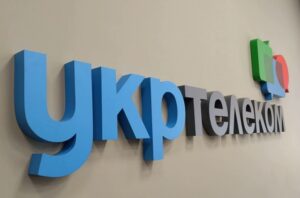
Ukrtelecom, the country’s largest fixed-line operator, increased its revenue by 12.7% year-on-year to UAH 3.6 billion in January-September, while cutting EBITDA by 15% to UAH 850 million.
Ukrtelecom continues to demonstrate a high level of operational efficiency: in 9M2024, the company generated total revenue of approximately UAH 3.6 billion, up from UAH 3.14 billion in January-September a year earlier, according to a statement on the company’s website on Tuesday.
At the same time, revenues from commercial lease of real estate released due to the network modernization increased by almost a third (+35%), up to UAH 325 million, compared to the same period last year.
The company’s EBITDA margin in 9M2024 decreased by 4% to 24%. Net profit was not disclosed. In 9M2023, Ukrtelecom posted a net profit of UAH 242.39 million compared to a net loss of UAH 755.18 million in 2022.
In January-September this year, Ukrtelecom paid UAH 1 billion in taxes and fees, the same as a year earlier. The company has paid UAH 3.8 billion to the budget over the entire period of the full-scale invasion.
Capital investments amounted to UAH 725 million.
“Ukrtelecom continues to replace copper infrastructure, develops optical infrastructure and invests in FTTH/P network using GPON (general purpose over-the-air network) technology.
“This year, we have already laid about 5.5 thousand km of optics throughout Ukraine, including Sumy, Chernihiv, Donetsk, Zaporizhzhia, Kharkiv and Kherson regions. In total, Ukrtelecom’s optical network reaches about 90 thousand km and covers 2.7 million Homepasses,” the company said.
It is noted that the development of the optical infrastructure contributes to the growth of broadband subscribers.
“During the full-scale war, the percentage of optical users in the total Internet subscriber base has increased significantly. At the beginning of 2022, optical subscribers accounted for 34% of the total Internet user base, while now this figure is 68%,” Ukrtelecom said.
The total number of optical Internet users increased to 360 thousand at the end of the third quarter of 2024, and revenue from optical Internet services increased by 17.5% over 9 months. Ukrtelecom’s optical internet has been installed in 1306 medical and 1763 educational institutions.
The company is improving energy efficiency, continuing preparations for the winter period and possible outages, and updating its battery and generator fleet. Since the beginning of 2023, the company has invested over UAH 60 million in the renewal of power equipment, including the purchase of batteries and diesel generators. The company has also created strategic fuel reserves. Ukrtelecom reminded that during the large-scale power outages in July 2024, it consumed up to 13.5 thousand liters of diesel fuel per day at a cost of UAH 600-650 thousand.
Joint Stock Company (JSC) Ukrtelecom is the largest fixed-line operator in Ukraine, providing a full range of telecommunications services in all regions of the country. The company’s national network consists of almost 1.5 million km of communication lines, which ensures its presence in all regions of Ukraine. “Ukrtelecom covers 11,000 settlements (400 cities and 10,900 villages and urban-type settlements). The company’s fixed-line subscriber base includes 3.9 million active telephone lines. Ukrtelecom’s Internet subscriber base includes almost 1.35 million users with a presence in 2,230 settlements (including 1.5 thousand urban-type settlements).
“Ukrtelecom is the sole shareholder and founder of TriMob LLC, which provides UMTS/WCDMA mobile services under the TriMob brand.
In 2013, the company joined SCM’s business.
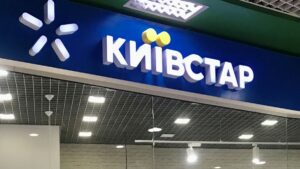
Revenue of Ukraine’s largest mobile operator Kyivstar in April-June this year increased by 9.5% compared to April-June 2023 to UAH 9.425 billion, and in dollars by 0.4% to $236 million, the company’s parent company VEON said in a report on Thursday.
“EBITDA increased by 9.8% yoy in local currency (+0.8% yoy in dollars) despite continued pressure from operating expenses in the second quarter of 2024, including electricity and fuel costs, as well as continued charitable donations in addition to employee support programs,” VEON said.
It is specified that EBITDA amounted to UAH 5.585 billion or $140 million. Compared to the first quarter of this year, when Kyivstar’s financial performance was significantly affected by the customer compensation program following a large-scale cyberattack in December 2023, revenue in hryvnia increased by 31.5% and EBITDA by 54%, while in dollars, the growth of these indicators was 26.1% and 47.9%, respectively.
According to the report, operating profit (EBIT) in April-June this year amounted to UAH 4.16 billion, which is 10.5% better than in April-June 2023 and almost twice as much as in January-March 2024.
In the second quarter, Kyivstar’s total operating income from mobile services increased by 8.7% to UAH 8.77 billion, including 10.8% from data transmission to UAH 5.18 billion, while income from fixed-line services increased by 16.4% to UAH 0.56 billion.
It is noted that the increase in profitability was achieved mainly due to the growth of mobile data revenues, supported by the careful implementation of cost control measures.
Kyivstar’s 4G customer base grew by 7.9% year-on-year to 14.1 million, and data usage per user increased by 11.1% to 11.3 GB per month, while voice traffic decreased by 4.5% to 540 minutes.
In general, the number of Kyivstar mobile subscribers in the second quarter of 2024 decreased by 2.9% compared to the same period in 2023 to 23.4 million, while ARPU (average monthly revenue from fixed-line voice services per subscriber) increased by 11.5% to UAH 122.9.
“Kyivstar explains the decline in its total mobile subscriber base by the number of Ukrainians living outside Ukraine.
“During 2024, Kyivstar recovered from the cyberattack in December 2023, with the subscriber base returning to pre-attack levels thanks to the successful implementation of a special customer retention program,” the report says.
It is also noted that the operator maintained access to key services, including digital healthcare, information and entertainment services, resulting in the number of Kyivstar’s multi-user subscribers increasing by 53.0% year-on-year, and revenues from multi-user services growing by 58.9%.
In particular, it is noted that Helsi, the country’s largest digital healthcare platform, continues to develop digital medicine in Ukraine: about 28 million registered patients (+11.1% compared to last year) have access to 1.6 thousand existing medical facilities and more than 38 thousand specialists active on the platform (+12.5% compared to last year).
It is specified that the number of downloads of the Helsi mobile application reached 8.2 million at the end of the quarter, which allowed customers to book 2.3 million appointments through the platform during the reporting period (+27.7% compared to the same period last year).
According to the report, Kyivstar TV streaming service ended the quarter with a 51.7% increase in monthly active users (MAUs) compared to the same period last year.
Kyivstar emphasized that thanks to the company’s efforts, almost 100% of its telecom network in the government-controlled area is operating normally, providing subscribers with communication and data services around the clock.
In Q2 2024, VEON generated revenues of $1.03 billion, up 12.1% year-on-year, with service revenue accounting for $987 million, up 11.3% year-on-year.
The telecom holding’s EBITDA increased by 10.6% year-on-year to $0.46 billion.
VEON’s revenue in national currencies increased by 15.1% and EBITDA by 13.9%. In addition to Ukraine, six other VEON subsidiaries showed revenue growth in Pakistan, Kazakhstan and Uzbekistan.
VEON’s subscriber base increased by 1% to 157.4 million in the second quarter. The number of 4G users reached 98.4 million (up 11.2%). The share of 4G users in the total subscriber base increased by 5.7 percentage points to 62.5%.
The group’s CAPEX increased by 5.8% to $181.4 million. The balance of cash and cash equivalents amounted to $722 million compared to $632 million as of March 2024. At the same time, the amount of funds decreased by 70% year-on-year.
VEON’s net debt increased by 17.6% to $3.2 billion in the second quarter.
VEON has maintained its forecast for the whole of 2024 for revenue growth in local currencies by 16-18% and EBITDA growth in local currencies by 18-20%.

In January-March 2024, IMC Agro Holding posted a net loss of $3.81 million compared to $4.10 million in the same period of 2023, while its EBITDA increased 3.2 times to $4.43 million, according to the company’s report on the Warsaw Stock Exchange.
“The increase in normalized EBITDA in the first quarter of 2024, as well as the decrease in net loss for the period, was due to an increase in sales,” the company said.
According to the report, the holding’s revenue increased by 41% to $59.20 mln, while the share of exports decreased to 71.7% from 83.5% a year earlier.
The share of corn in the revenue decreased to 42.8% from 83.3%, while the share of wheat increased to 34.4% from 15.9%, and sunflower seeds to 22.3% from 0.3%.
IMC’s gross profit increased by 48% to $12.75 mln, and its operating loss decreased to $0.17 mln from $2.85 mln in the first quarter of 2023.
At the same time, due to the devaluation of the hryvnia in the first quarter of this year compared to its fixed exchange rate for the year, the company incurred a foreign exchange loss of $4.10 million, which resulted in the total loss of IMC for the reporting year increasing to $7.86 million from $4.08 million a year earlier.
Overall, the agroholding’s assets increased by 0.6% to $314.14 mln in the first quarter of 2024.
At the same time, the company increased its investments in the reporting period to $4.9 mln, while in the first quarter of last year there were practically none ($0.02 mln), while the outflow from financing activities decreased to $0.9 mln from $6.4 mln, and the inflow from operating activities amounted to $16.4 mln against an outflow of $1.9 mln in the same period last year.
As a result, free cash flows at the end of March increased to $26.0 million from $16.20 million at the beginning of the year, while bank debt remained virtually unchanged at $45.9 million.
“IMC is an integrated group of companies operating in Sumy, Poltava and Chernihiv regions (north and center of Ukraine) in the crop production, elevators and warehouses segments. The land bank is about 120 thousand hectares, storage capacity is 554 thousand tons with a harvest of 1.002 million tons in 2023.
In 2023, IMC posted a net loss of $21.03 million compared to $1.12 million a year earlier, and its EBITDA decreased 11.3 times to $3.22 million. The holding’s revenue increased by 22.3% to $139.45 million, while the share of exports decreased to 68% from 73% a year earlier.
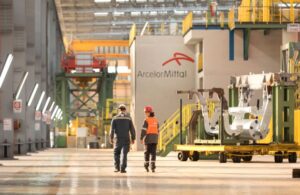
ArcelorMittal increased EBITDA by 35% in the first quarter of 2024 compared to the fourth quarter of 2023 to $1.96 billion, the company said in a statement.
The main increase in EBITDA was driven by improved performance of assets in North America, Brazil, Europe and India.
Operating profit in the last quarter amounted to $1 billion compared to a loss of $1.98 billion in the previous period.
Net profit in January-March amounted to $938 million, compared to a loss of almost $3 billion a quarter earlier.
Revenue increased by 12% last quarter compared to the fourth quarter, amounting to $16.28 billion.
ArcelorMittal’s capex in working capital amounted to $1.7 billion in January-March. The capex target for this year is $4.5-5 billion.
In the first quarter, the company increased steel production by 5% quarter-on-quarter to 14.4 million tons. Last quarter, metal shipments increased by 1.5% to 13.5 million tons. The company’s iron ore production increased by 4.8% to 6.5 million tons in the quarter.
According to ArcelorMittal’s forecasts, global steel consumption, excluding China, will increase by 3-4% in 2024. At the same time, demand in the US will increase by 1.5-3.5%, in Europe by 2-4%, in Brazil by 0.5-2.5%, and in India by 6.5-8.5%.